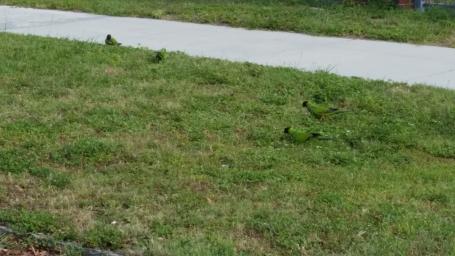Prairie Changes
In many environments, changes, called succession, take place over time. One kind of plant succeeds another. Weeds start to grow. Then woody plants come. The woody plants take over. The environment becomes a forest. But trees do not survive fires. The lightning and the bison protected the prairie from those changes. So millions of acres stayed prairie.
The animals that live in the prairie needed all that prairie to live. You can understand that when you look at one bird. The meadowlark is bird that nests in the prairie. It gets its food there, too. In summer, it eats insects. In winter, it eats seeds. To stay alive, the meadowlark needs at least 20 acres of prairie land. If 100 meadowlarks live in one prairie, they need a 2,000 acre prairie.
That’s just one bird. The Henslow sparrow needs 80 acres to live. Some small farms are 80 acres. They produce a lot of food for the farm family. The family sells food to people in other places. What if the family buys another 80 acres of prairie to expand its farm. They will grow more food. At least one sparrow and four meadowlarks will lose their habitat.
After the invention of the steel plow, farmers turned more prairie into cornfields. People built more homes and roads. Over time, what was left of the natural prairies were small and widely scattered pieces of prairie. Birds could not nest there. The seeds that the wind blew from the prairie plants fell on highways, in backyards, and in cornfields. The prairie land that was left lost the bison, and weeds began to move in.
What was left of the prairie was in small patches, called remnants. People use the word remnant to talk about leftover pieces of cloth. When people make clothing, some cloth is left. People may use that cloth to patch clothing. Pioneers used remnant cloth to make quilts. But if a prairie remnant is only about ten acres, it has a limited future.
What would the rest of the century bring for prairies? Each year, there were fewer and fewer acres, and in time only remnants of prairie remained in Illinois, the prairie state. Today, less than 1% of the original Illinois prairie is left.
